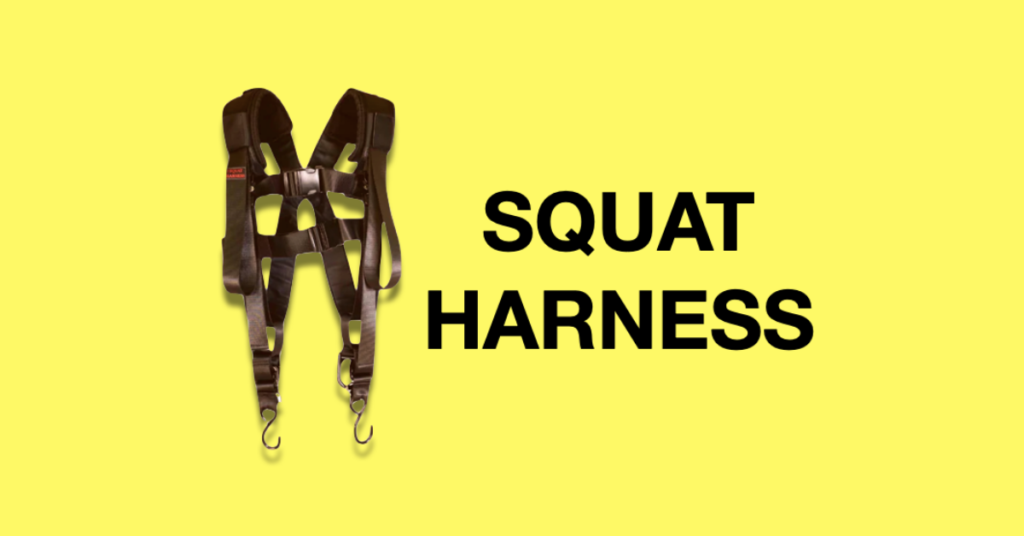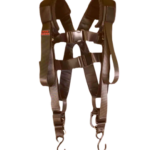The squat harness made by Ripped by Rosenblatt is a great barbell squat alternative for those with low back pain or shoulder issues.
I have the third version of the harness (V3) and it’s adjustable and really easy to use.
So far I’ve used it with cable machines, resistance bands, and dumbbells.
And unlike a barbell, I don’t feel compression of my spine when working out my legs.
Let’s check it out.
Unboxing
Table of Contents
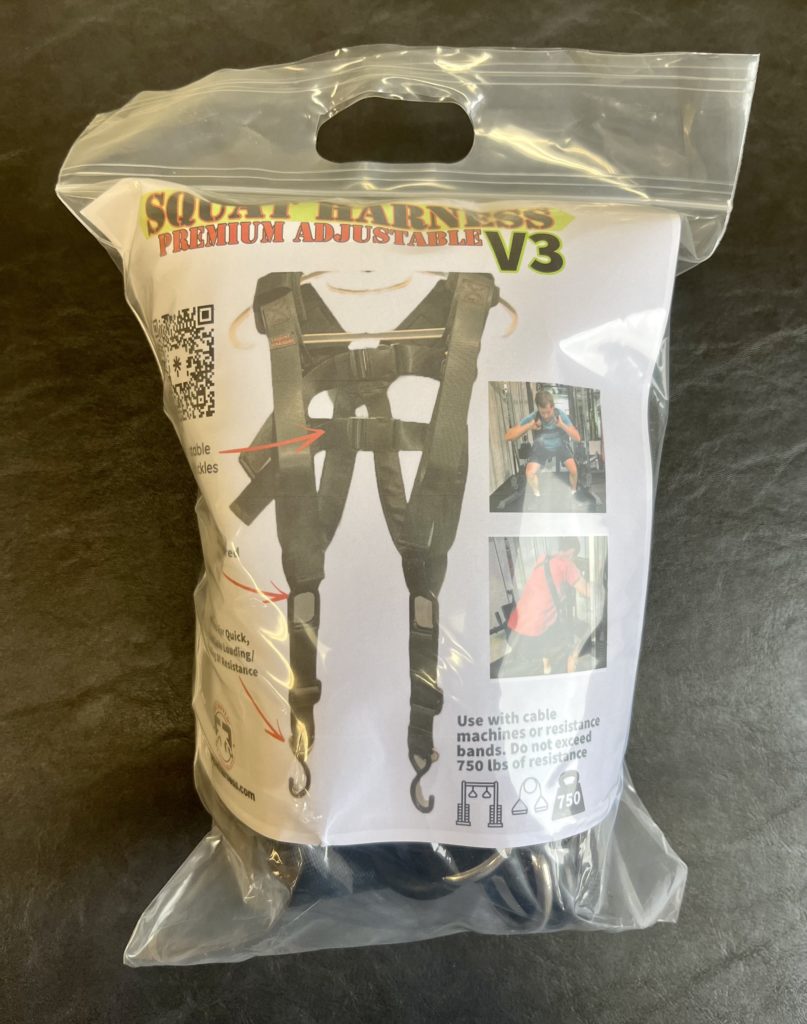
The squat harness comes in a bag with an insert showing its features and a QR code with sample exercises.
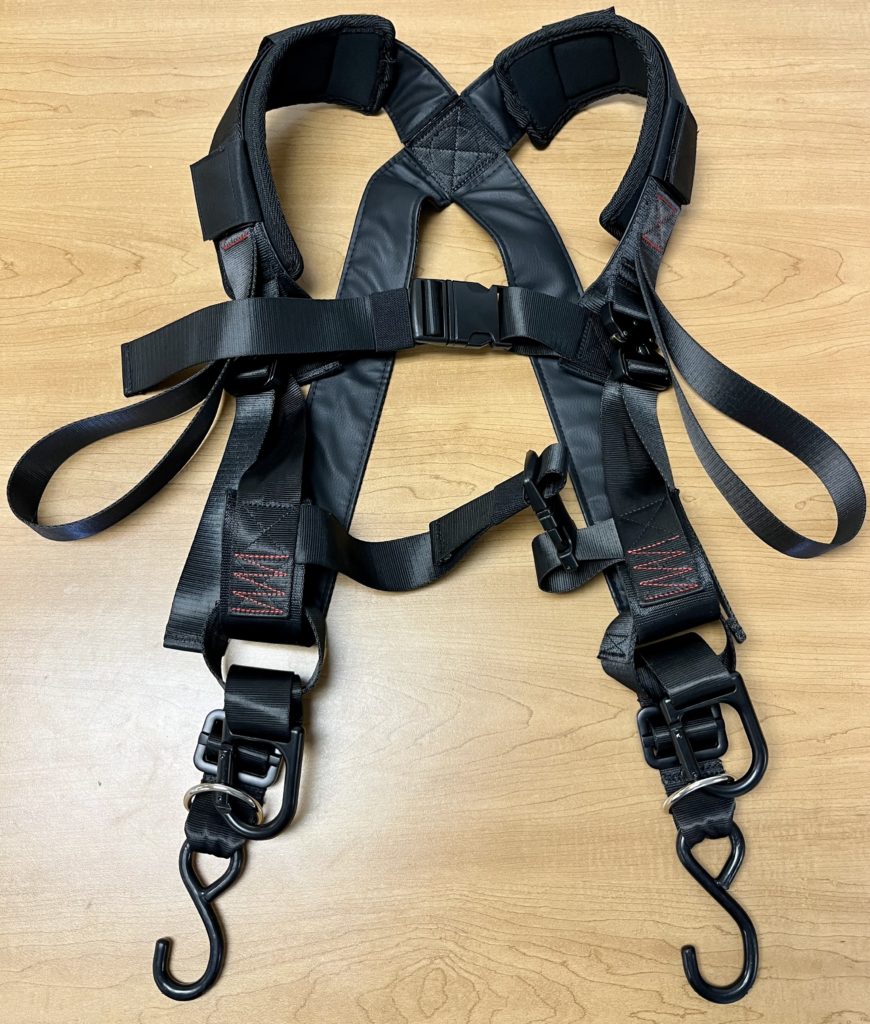
And here it is once I pulled it out of the bag.
The straps are made of quality material and set up is quick.
I put it over my shoulders, buckle the two front straps, and connect the hooks to resistance.
Specs
- Straps: Nylon/polyester material
- Weight capacity: 750 lbs
- Shoulder padding: 1/2″ thick, moisture wicking neoprene
- Hooks: Steel
Features
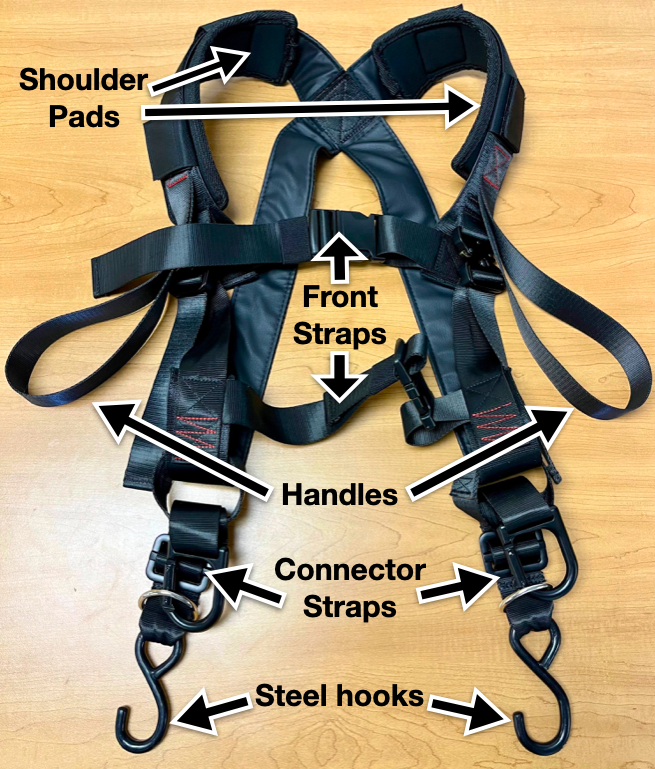
Above I’m showing you an overview of all the parts that make up the squat harness.
I’m gonna break them down so you can understand the function of each one.
Shoulder Pads
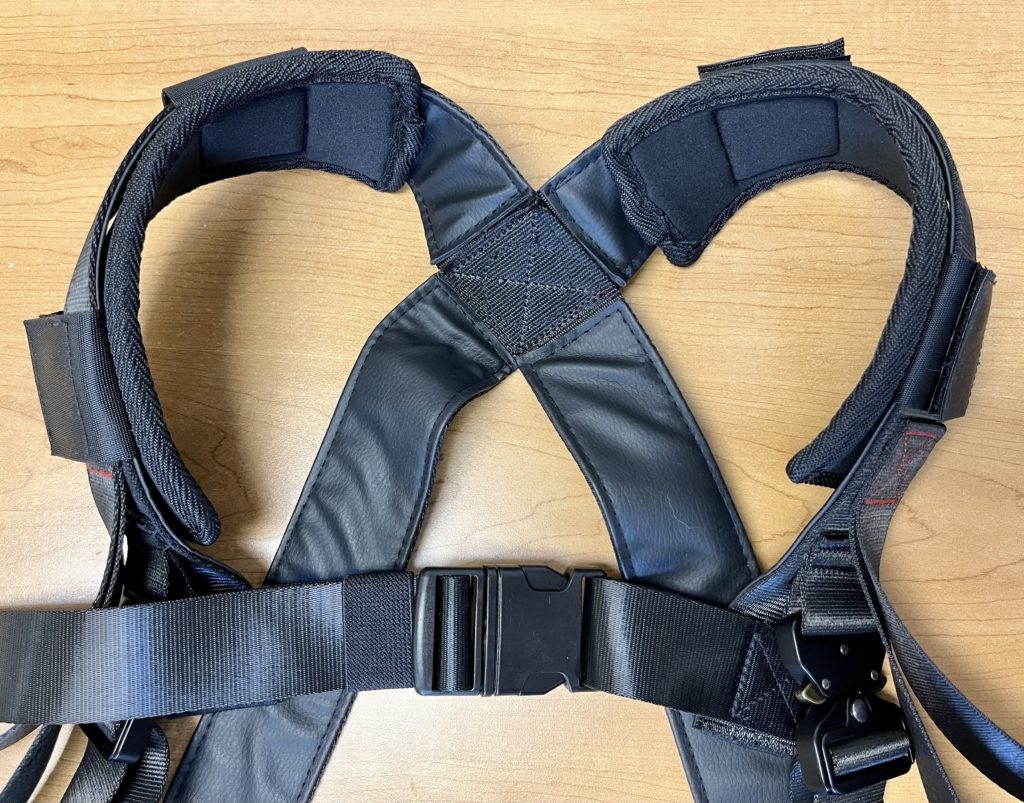
I’ll start from the top showing you the shoulder pads.
These are connected to the harness by a couple of velcro straps.
I don’t take them off unless I get them too sweaty and need to wash them.
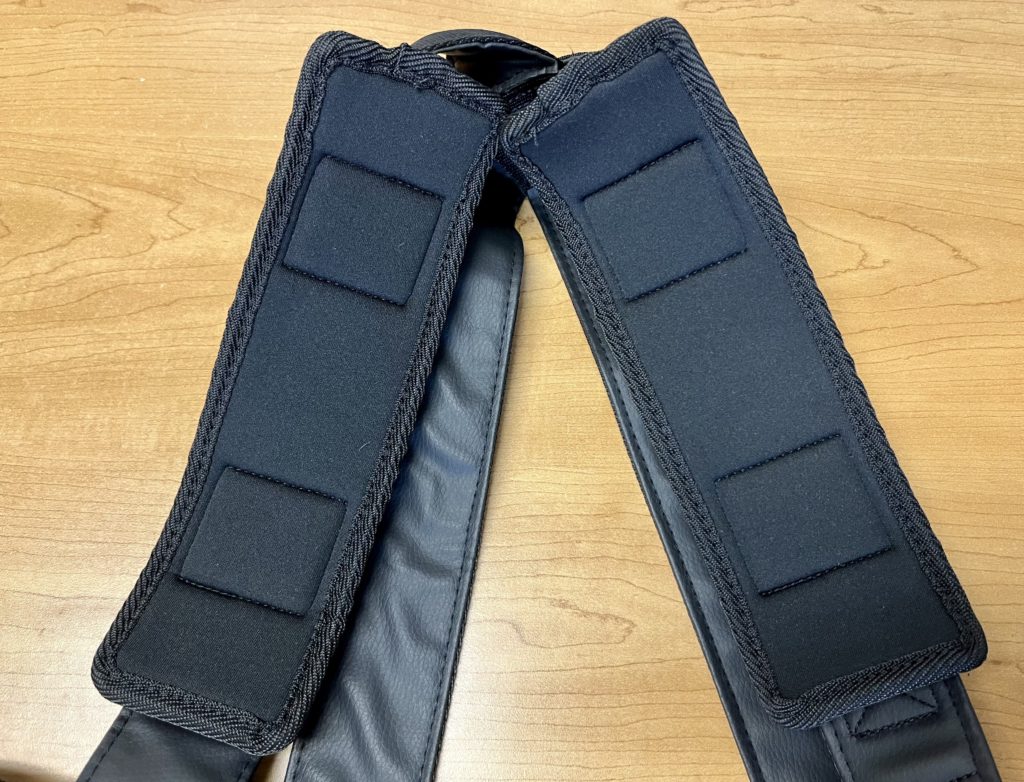
The pads are made of moisture wicking neoprene so sweat dries up quick.
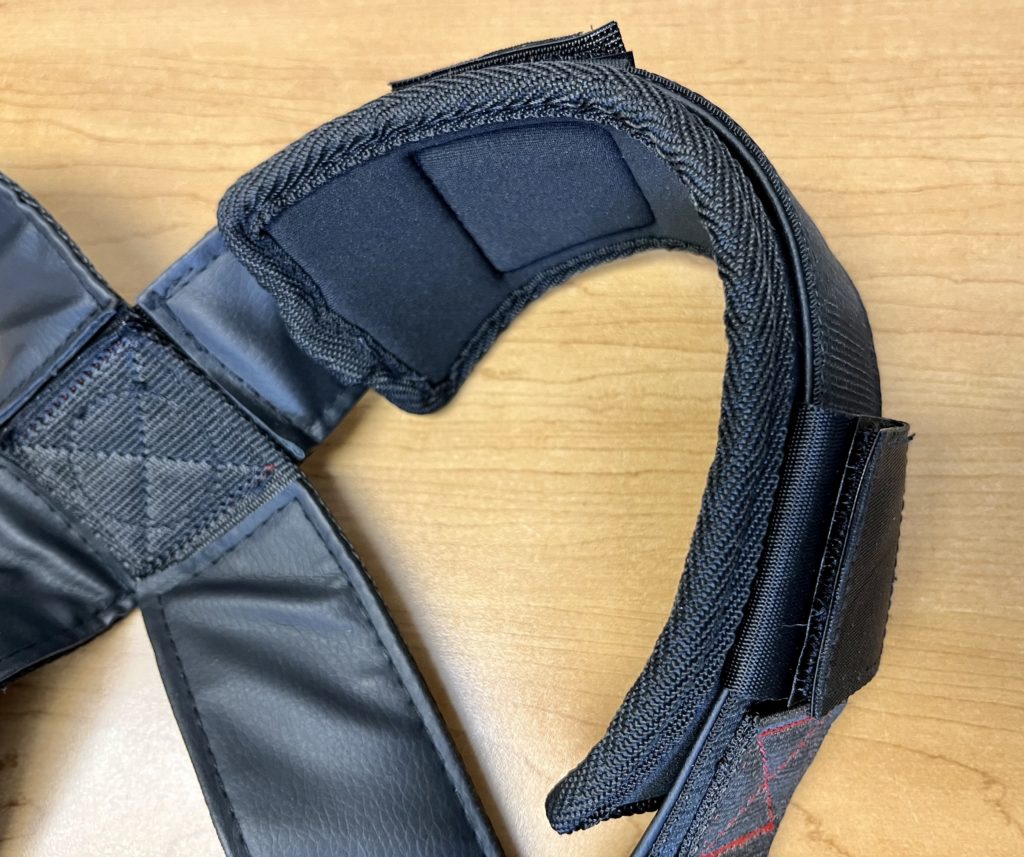
The shoulder pads are about a 1/2 inch thick so they feel comfortable when I have the harness under load.
Front Straps
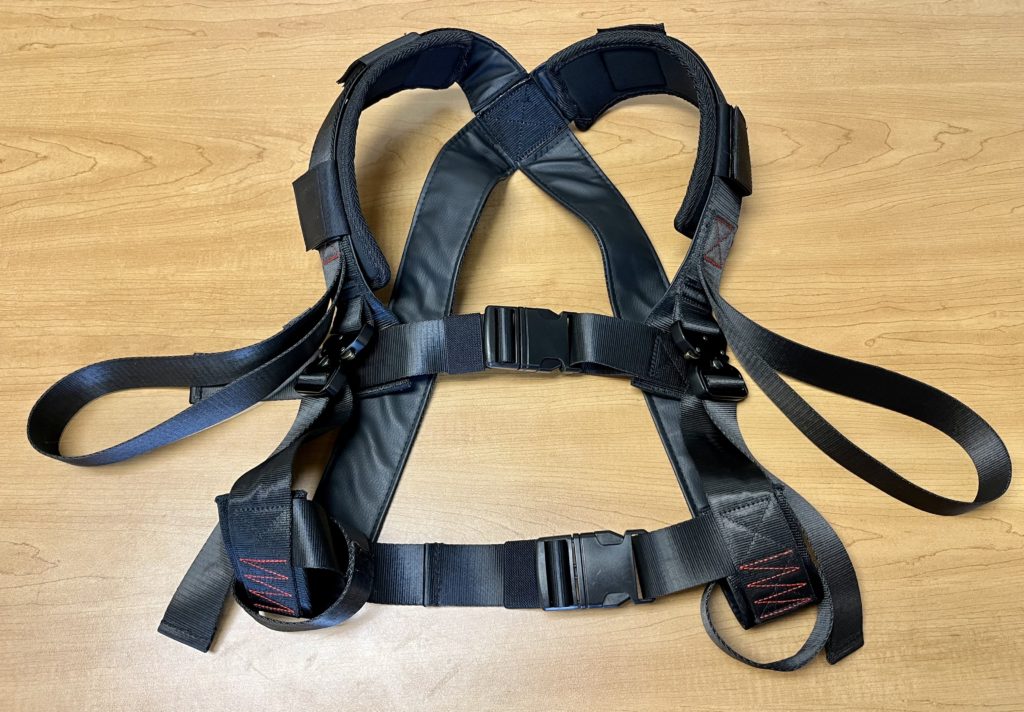
Right in the front there are two horizontal straps.
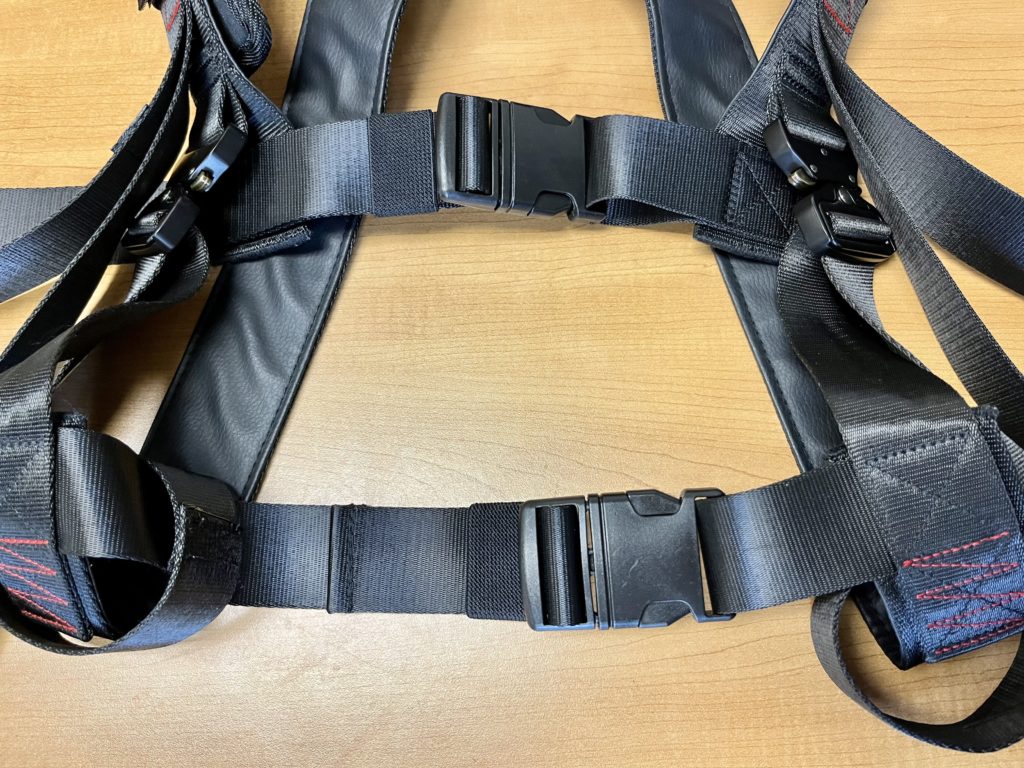
They’re both adjustable and have a plastic buckle.
I like a snug fit so I keep these tight around my torso.
Back Straps
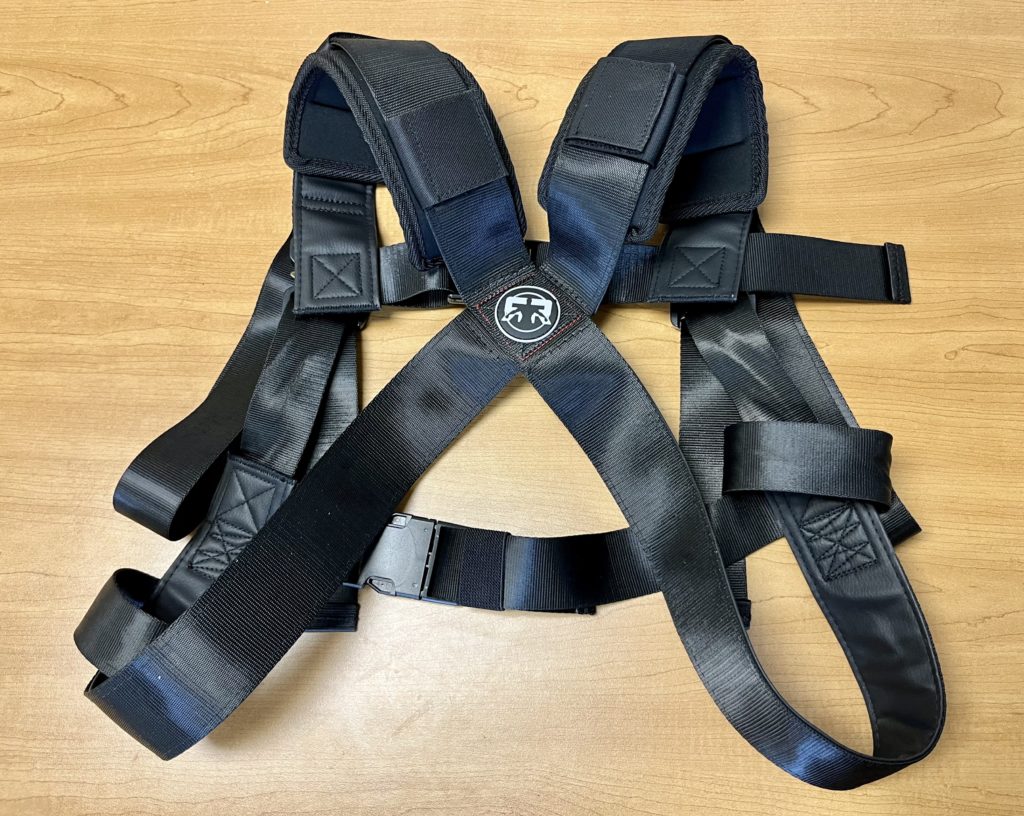
The back straps form an “X” pattern and all meet in the middle.
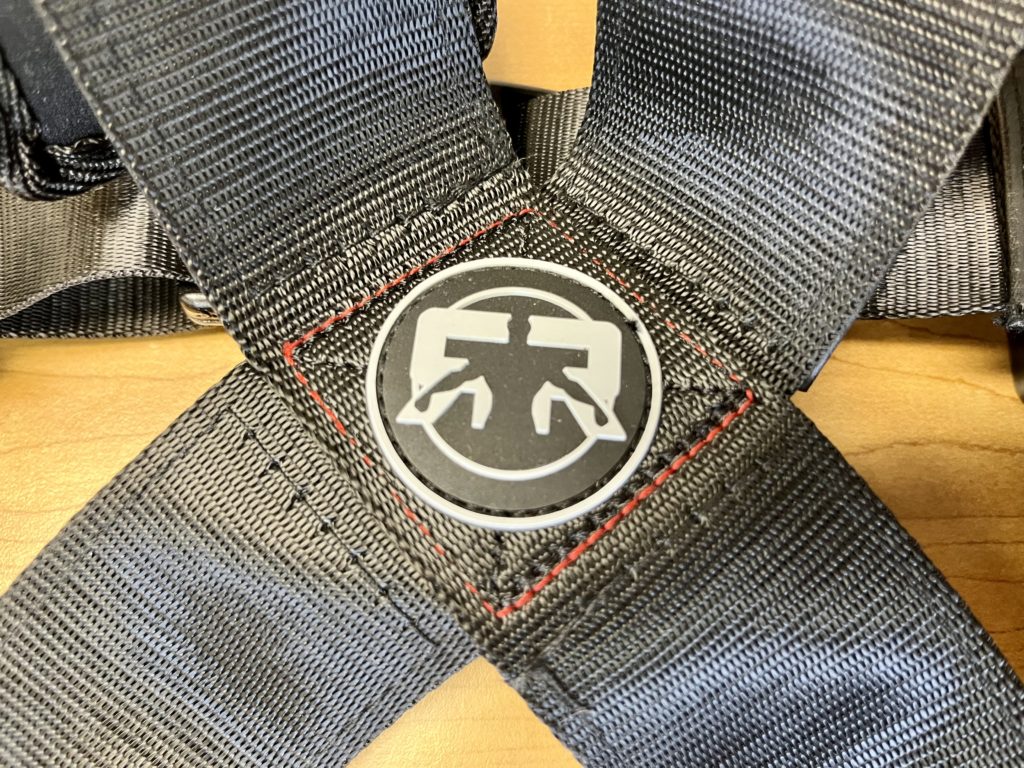
Here’s a closer look at the stitching where they all meet.
Buckles
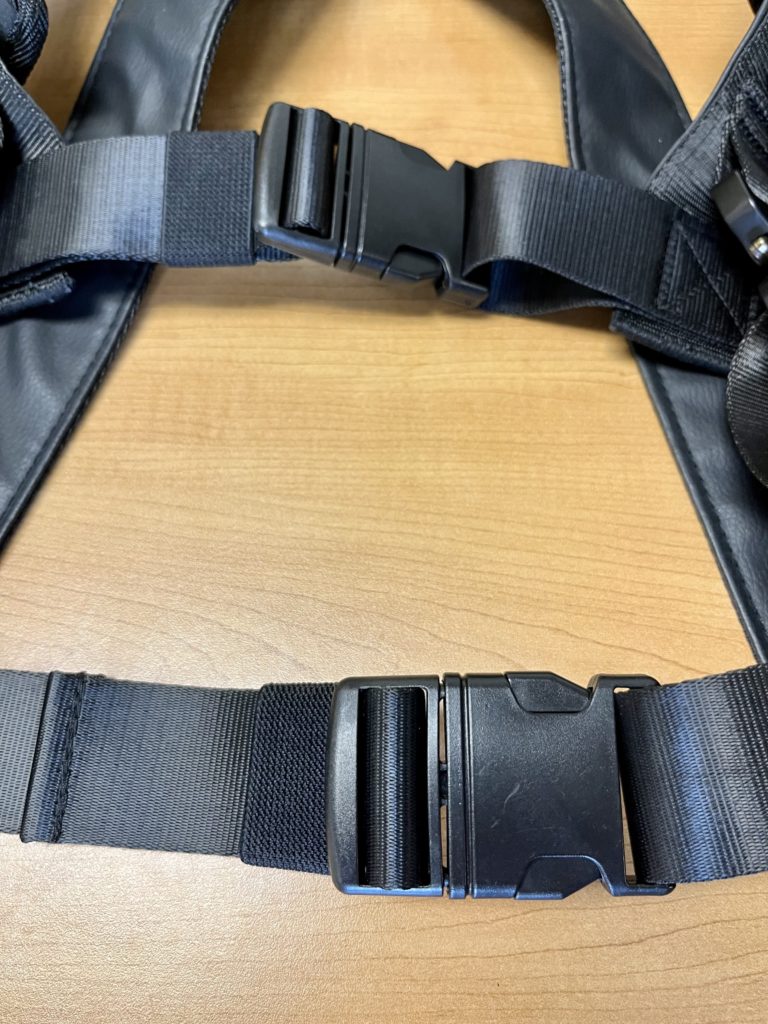
The squat harness uses two different buckles.
Previously I showed you the plastic buckles that go across the chest.
These don’t have any weight bearing function so they don’t need to be heavy duty.
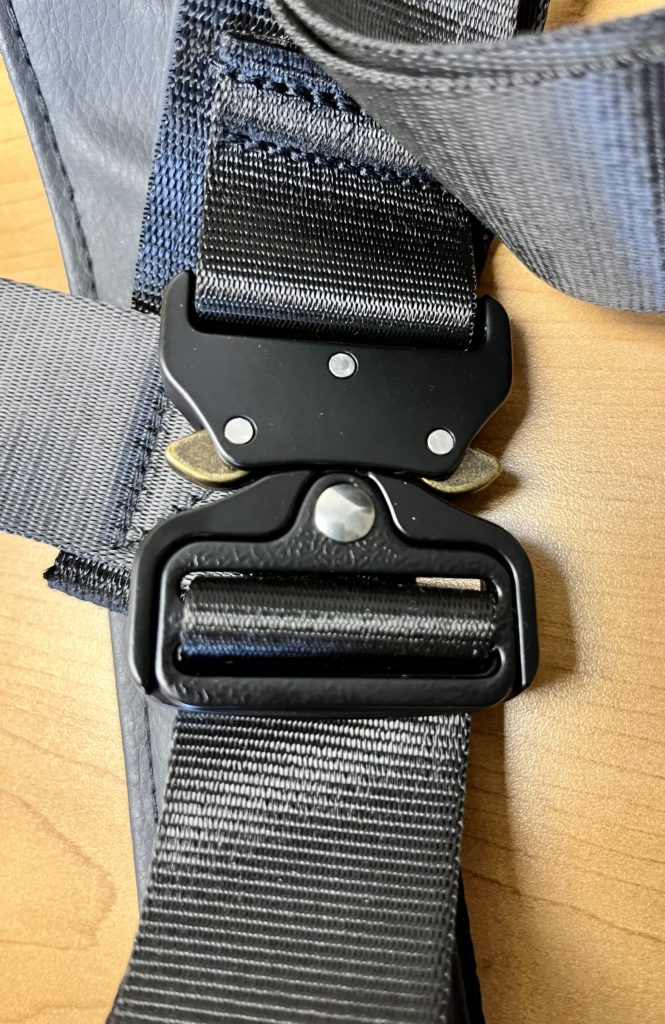
But the ones that do take on weight are these quick release buckles hiding under the handles.
These are often seen in climbing equipment and similar to the ones used on the OmniStrap which are rated for a ton of weight.
Handles
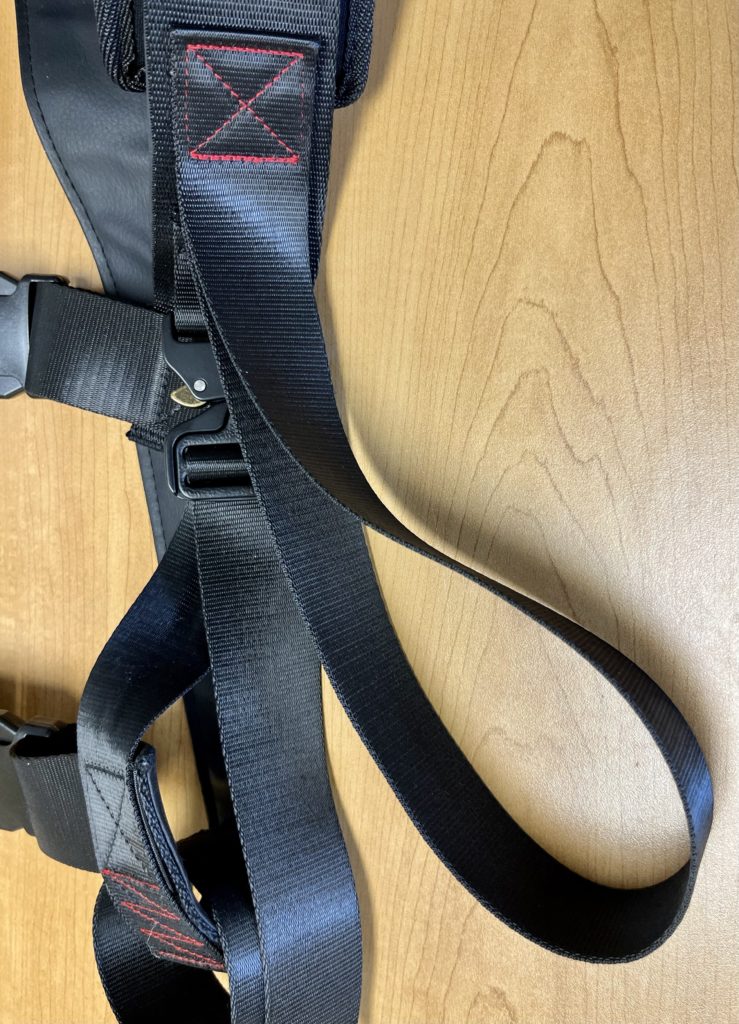
There’s two loops on each side of the squat harness that can be used as handles.
They sit at the front so when I use them it gives me a similar hand position as the handles on my safety squat bar.
Connector Straps
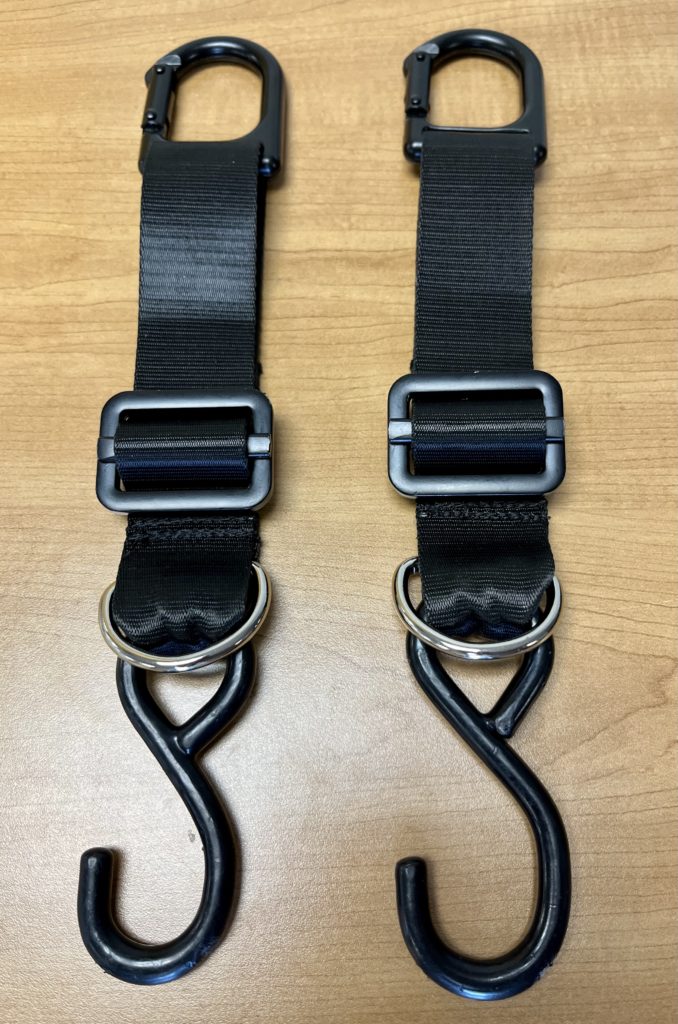
The connector straps are the piece that connect the harness to whatever type of resistance I wanna use.
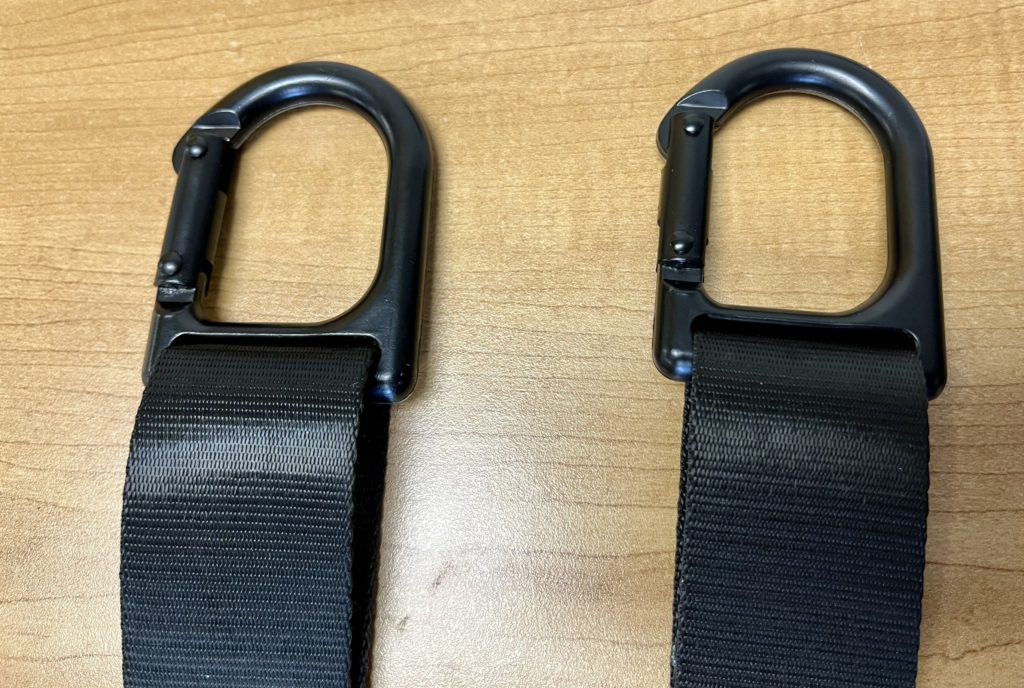
The top of each strap has a carabiner that I can clip directly to the squat harness or to a D-ring to make them shorter.
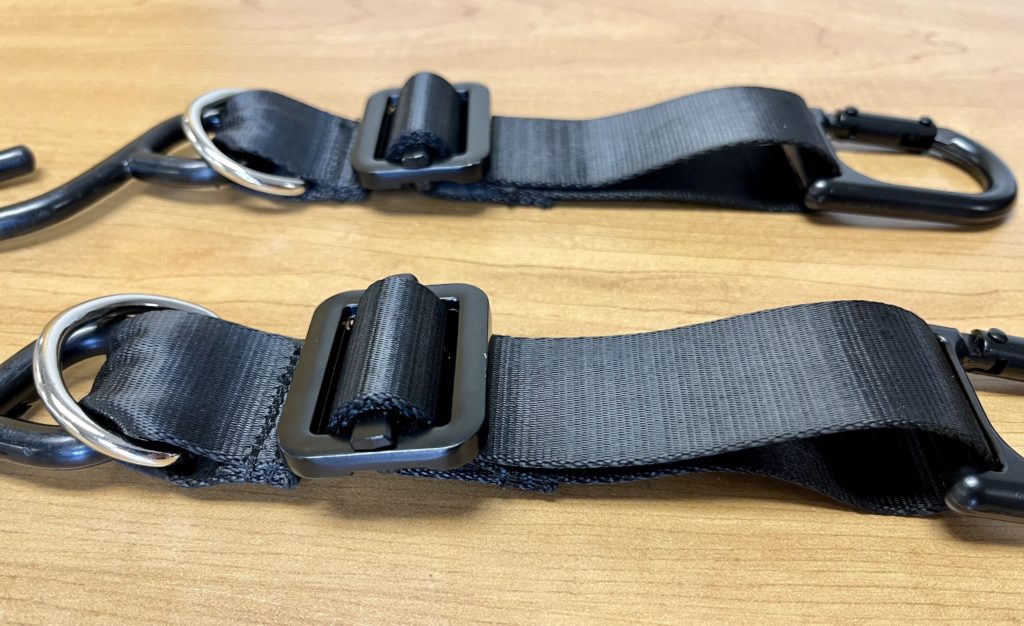
The middle of the connector straps have a buckle where I can adjust the length.
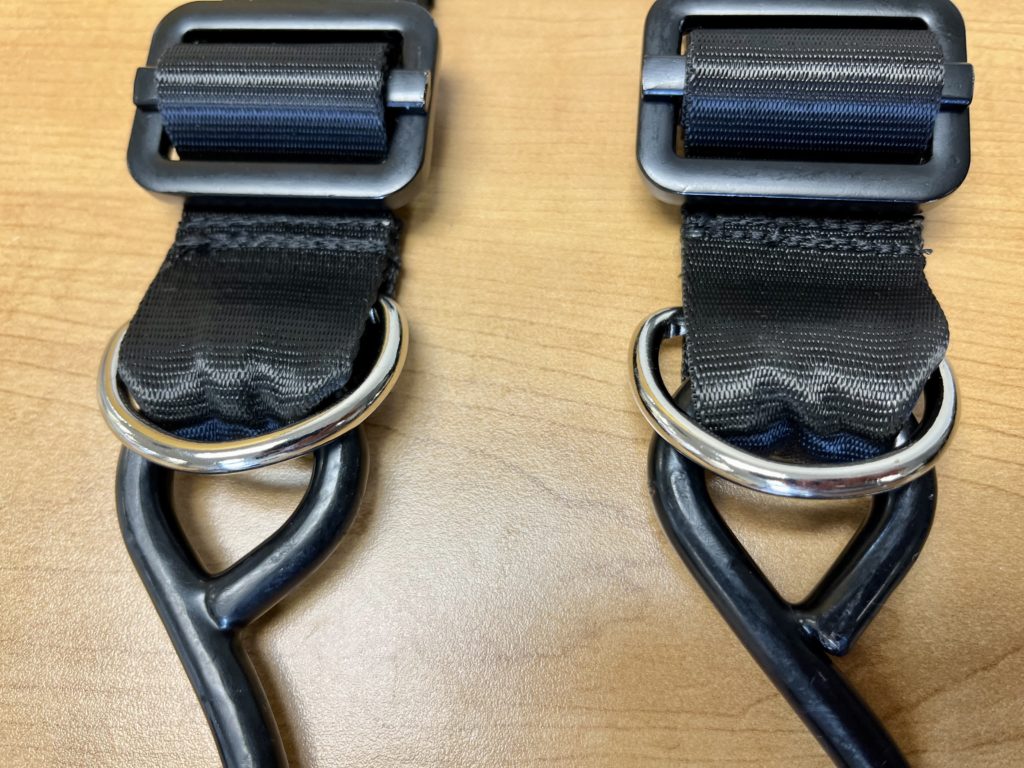
And right under the buckle there’s a chrome D-ring.
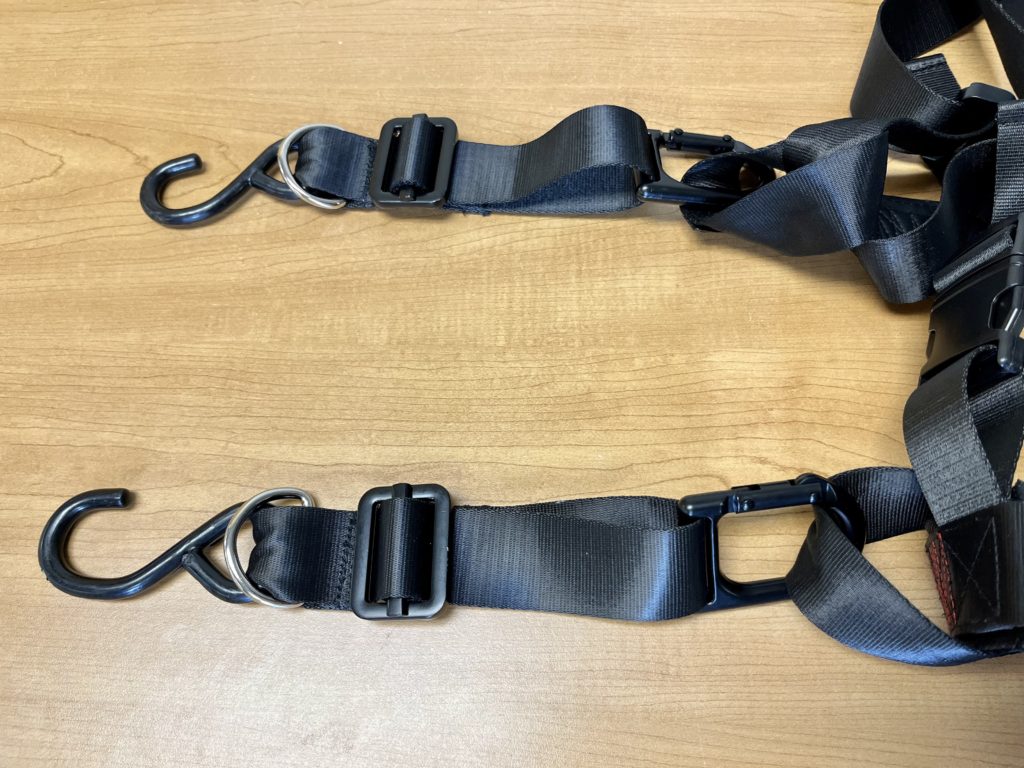
Here’s what the straps look like at when I clip the carabiner to the bottom loop on the harness.
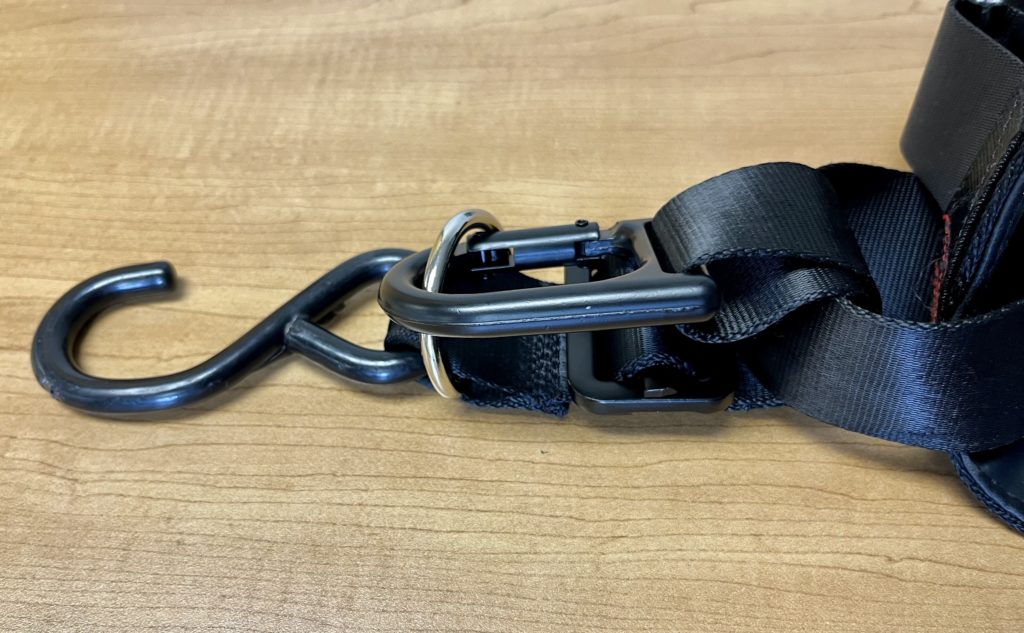
If I want to make them shorter, I’ll thread the straps through the bottom loop and clip it to the D-ring like I did above.
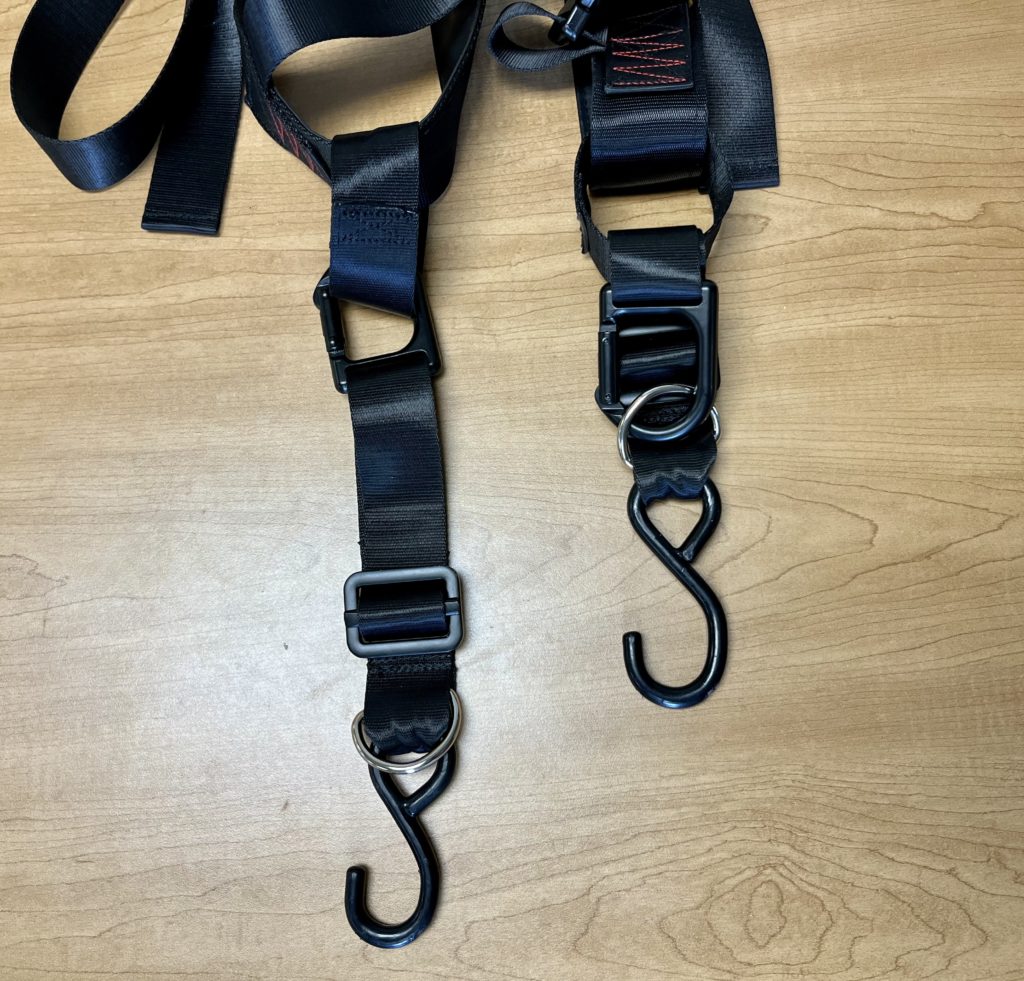
Here’s what the straps look like at normal length (left) and shortened length.
With the shorter set up (right) I’m able to get more depth.
And of course I can use step up boards for even more depth or deficit exercises.
Hooks
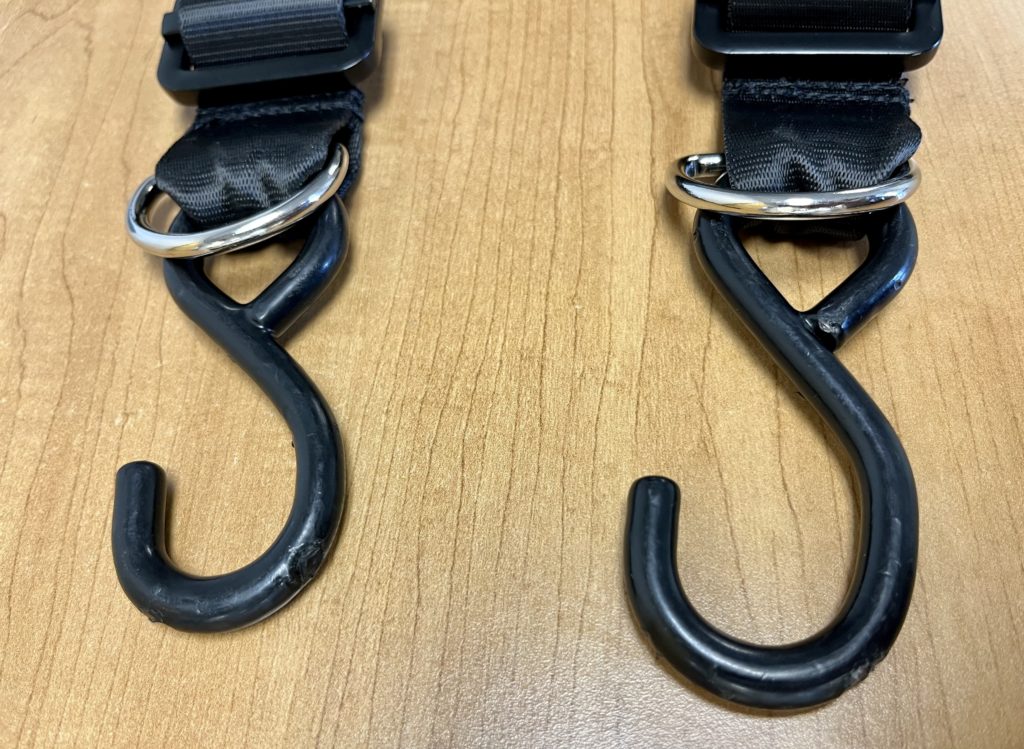
And finally, right at the bottom of the connector straps are the steel hooks.
I like that they used an open ended hook here instead of a carabiner.
This makes it much easier to connect/disconnect the squat harness from resistance.
Exercises With The Squat Harness
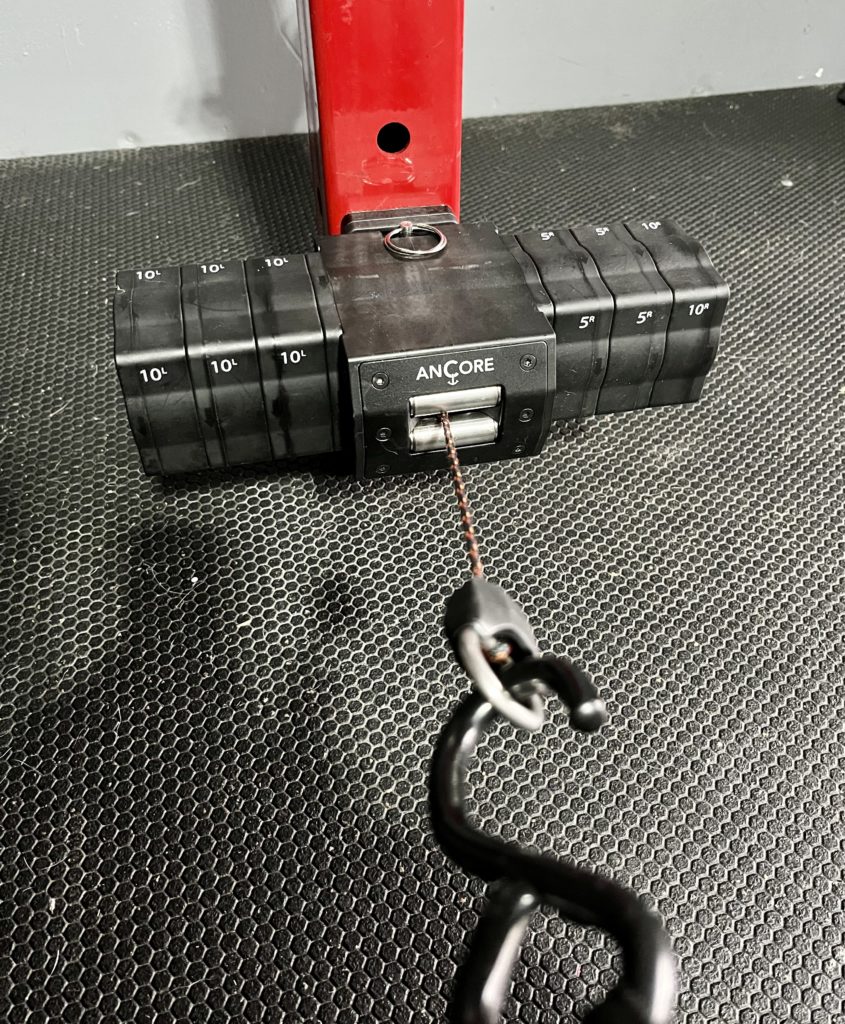
Rosenblatt originally made the squat harness to be used with a functional trainer.
But I don’t have one so I’ve tested it using two cable machines I attach to my weight rack: Ancore trainer and Beyond Power Voltra.
The pic above shows how I connect the hooks to the Ancore Trainer.
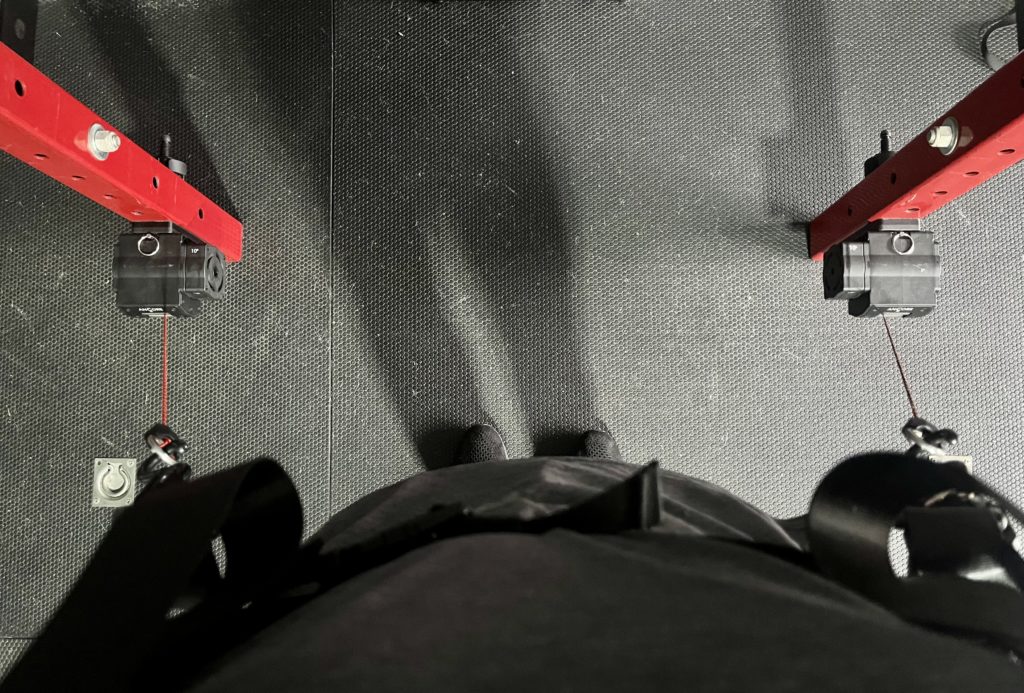
This is what it looks like when I stand in front of my PRx weight rack with each hook connected to a cable machine.
Later on I’ll show you how I used the squat harness with just one hook to simulate a front squat and good mornings.
Below you’ll see all the exercises I’ve tried and feel good while wearing the harness.
Legs
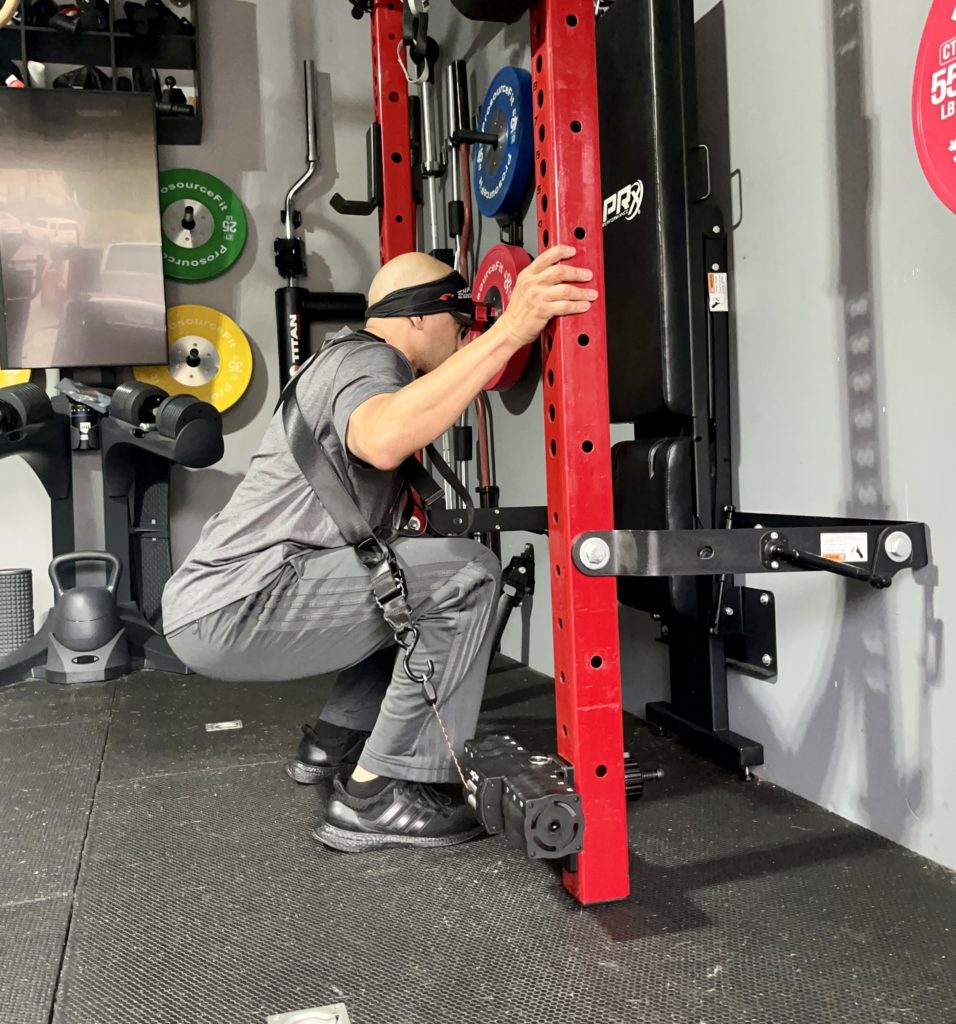
Here I am doing squats.
With the resistance coming from the sides, this feels more low back friendly than if I had a barbell on top of my shoulders.
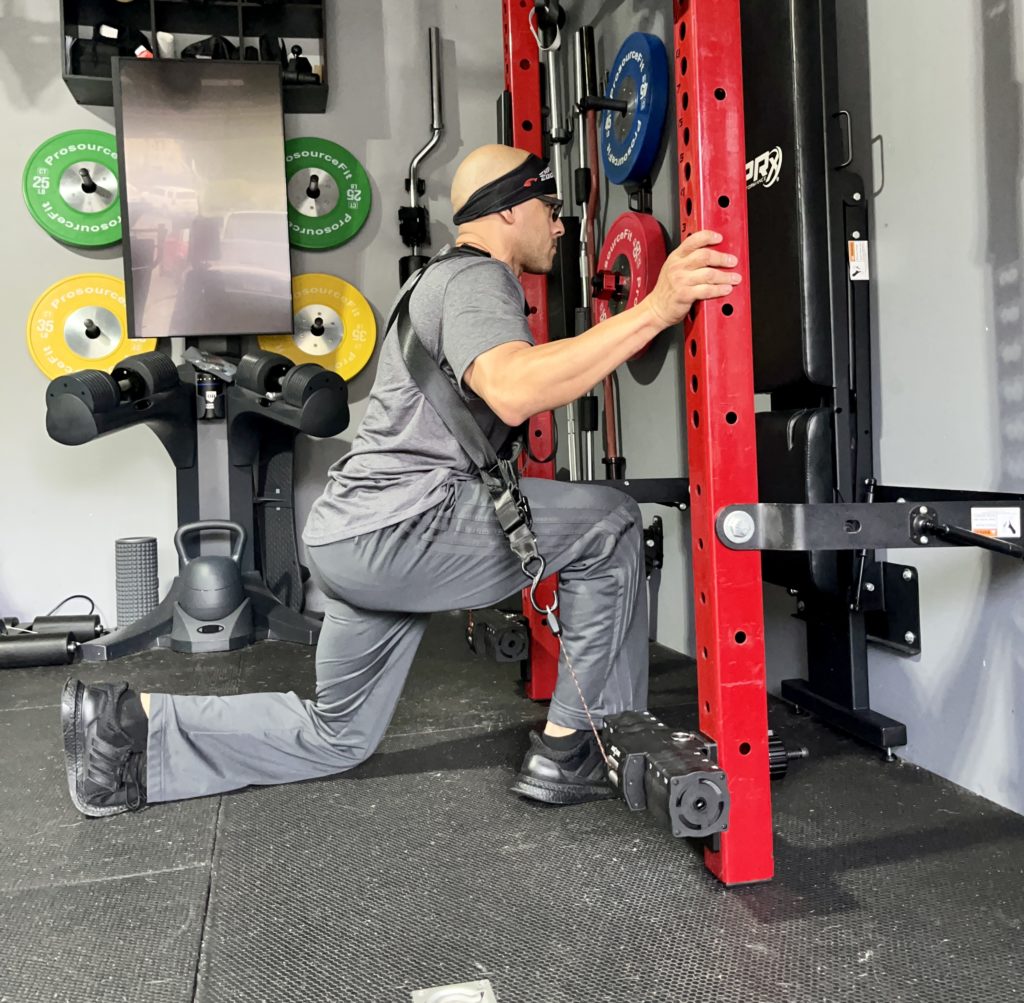
Here’s a reverse lunge.
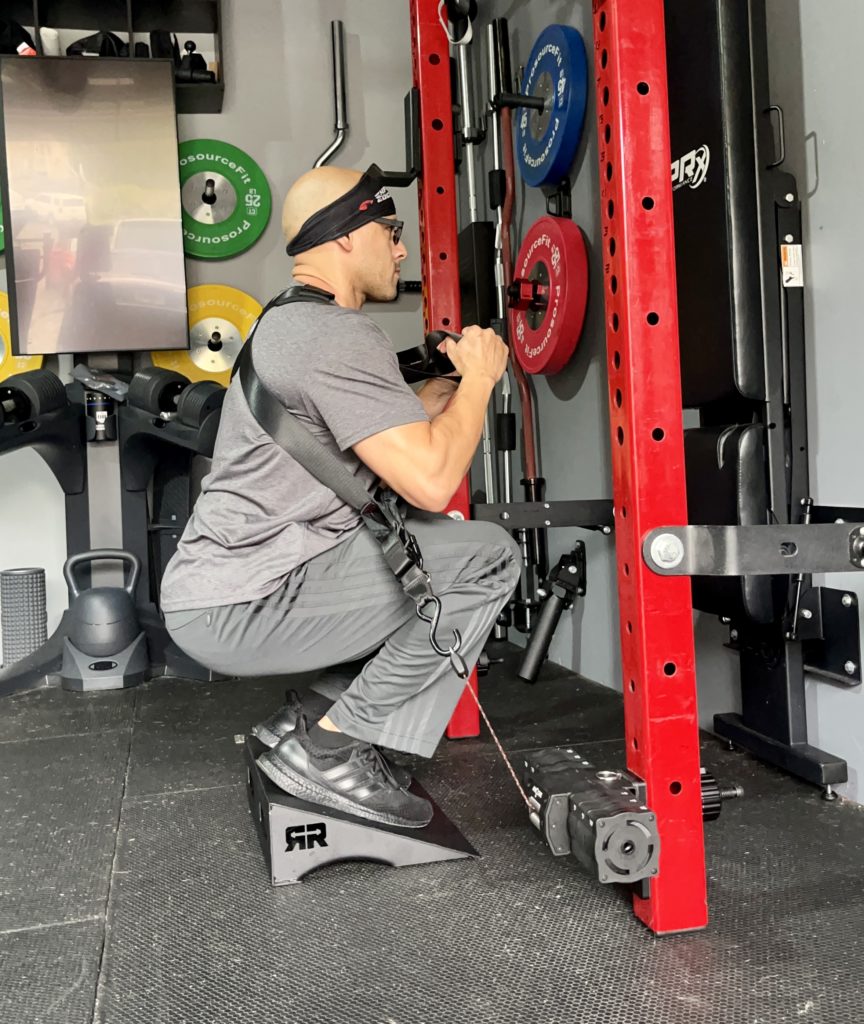
And when I want to hit the quads more, I use my Ripped Ramp.
This forces my knees to go forward (like the Knees Over Toes Guy preaches) and keeps my spine more upright than a flat footed squat.
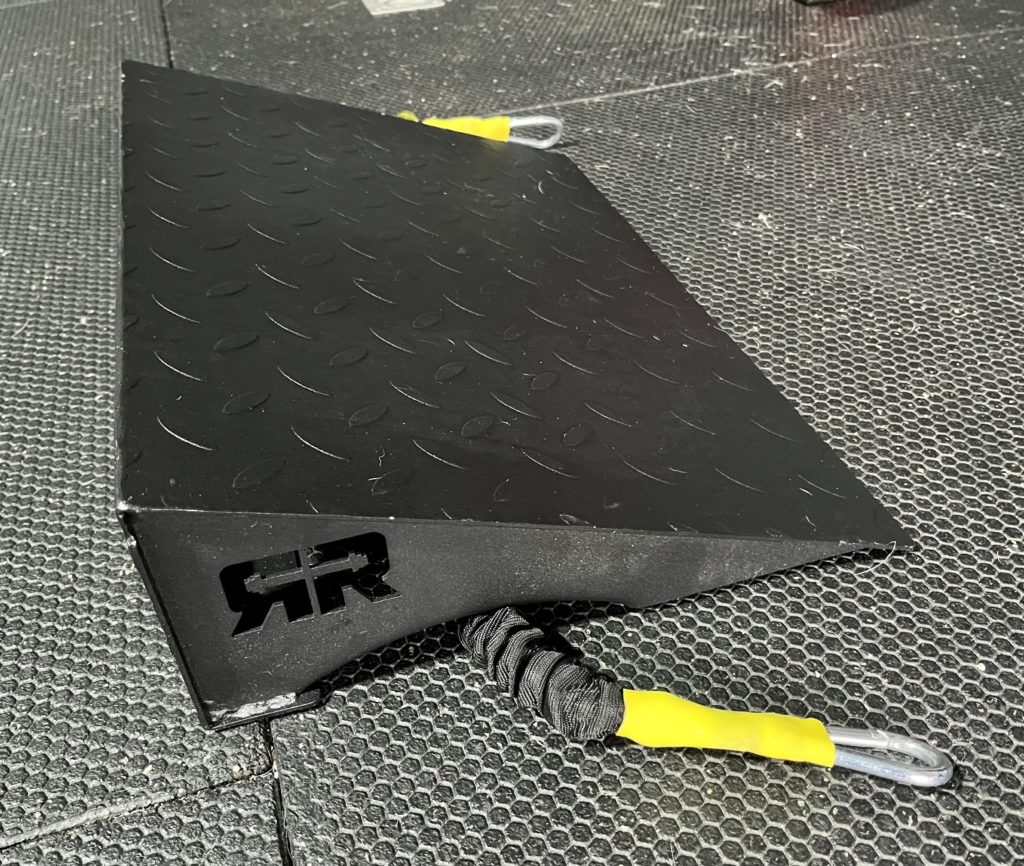
Some of you might say, “what about if I don’t have a cable machine?”
If you have resistance bands and a slant board like the one I have, you can still use a squat harness to make squats challenging without hurting your back.
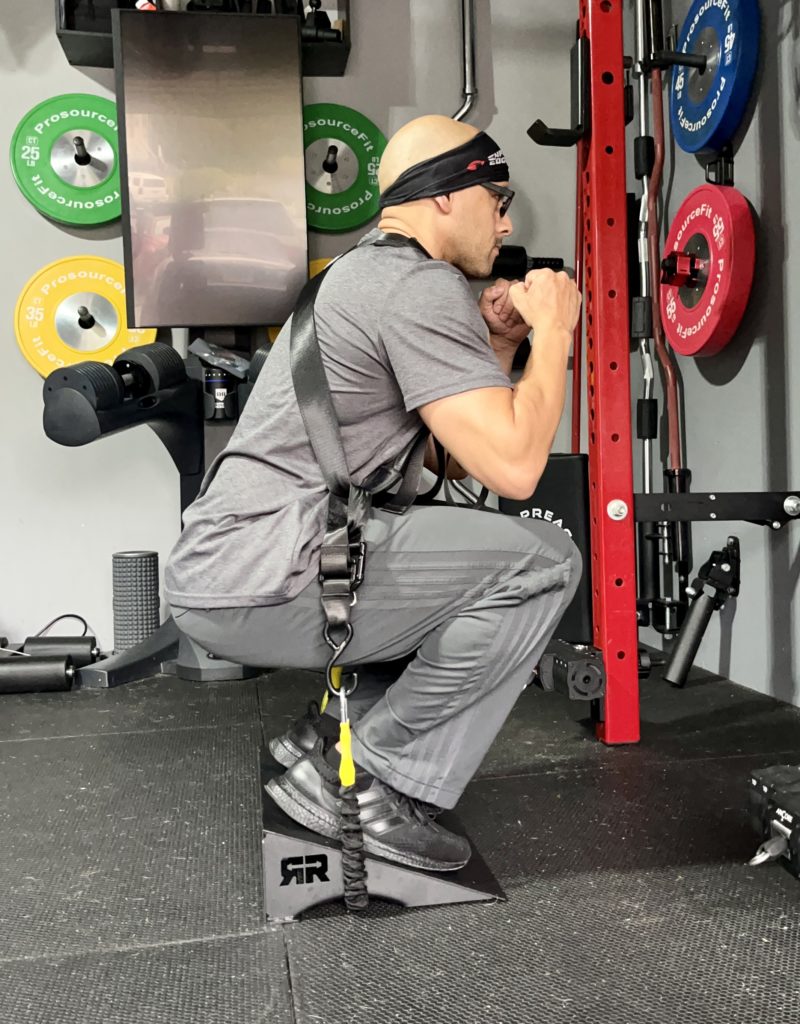
I slide the resistance bands under the Ripped Ramp, connect them to the harness hooks, and I squat away.
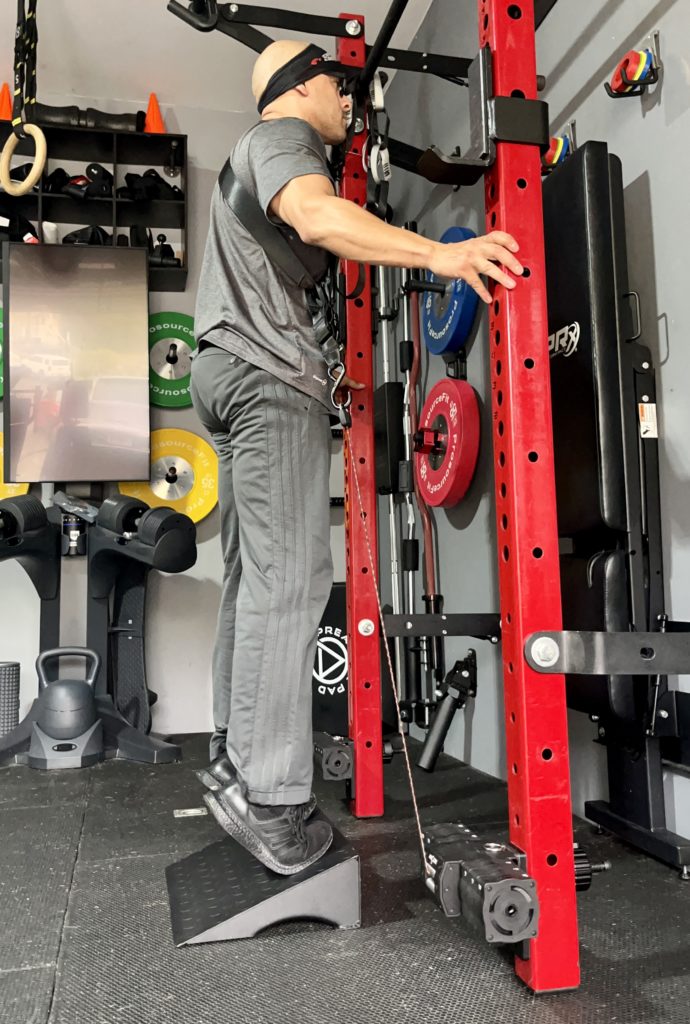
Here I’m doing calf raises with my cable machine but the same can be done with resistance bands.
Other exercises I could do include:
- Step ups
- Squats using a flywheel trainer
- Pistol squats with assistance from a suspension trainer
- Assisted Nordic curls
- I can even use it hooked up to an open trap bar
You’re only limited by your imagination with the way this squat harness can be used.
Below I’ll show you some upper body exercises.
Weighted Calisthenics
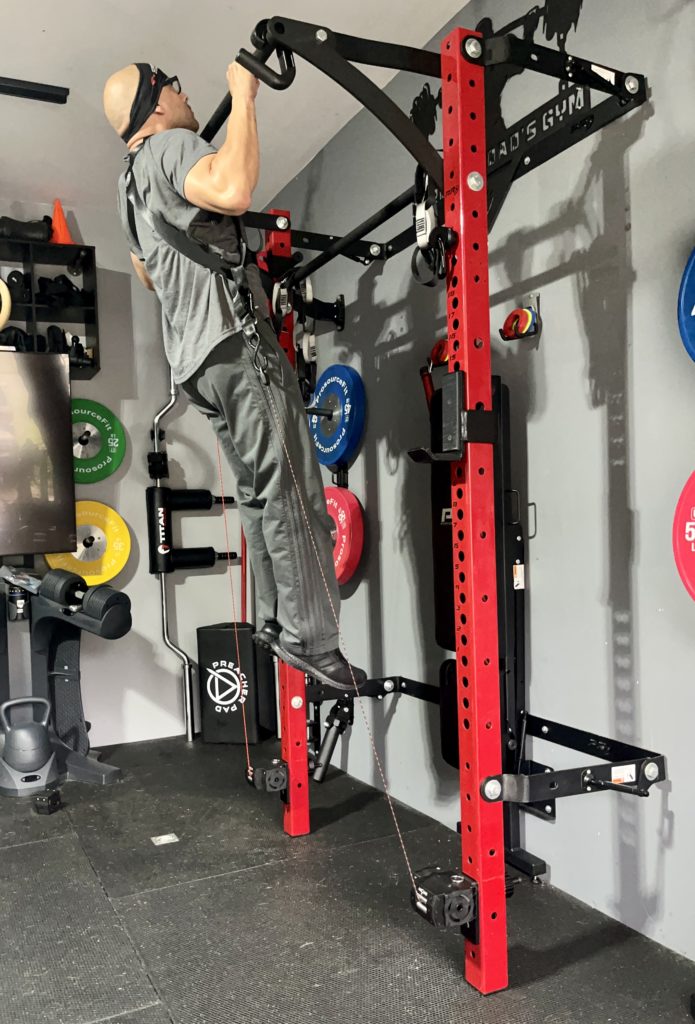
Here I’m doing weighted pull ups with the cable machine.
I like that I don’t have any arm or shoulder restrictions like I’ve had with some weight vests I’ve tested.
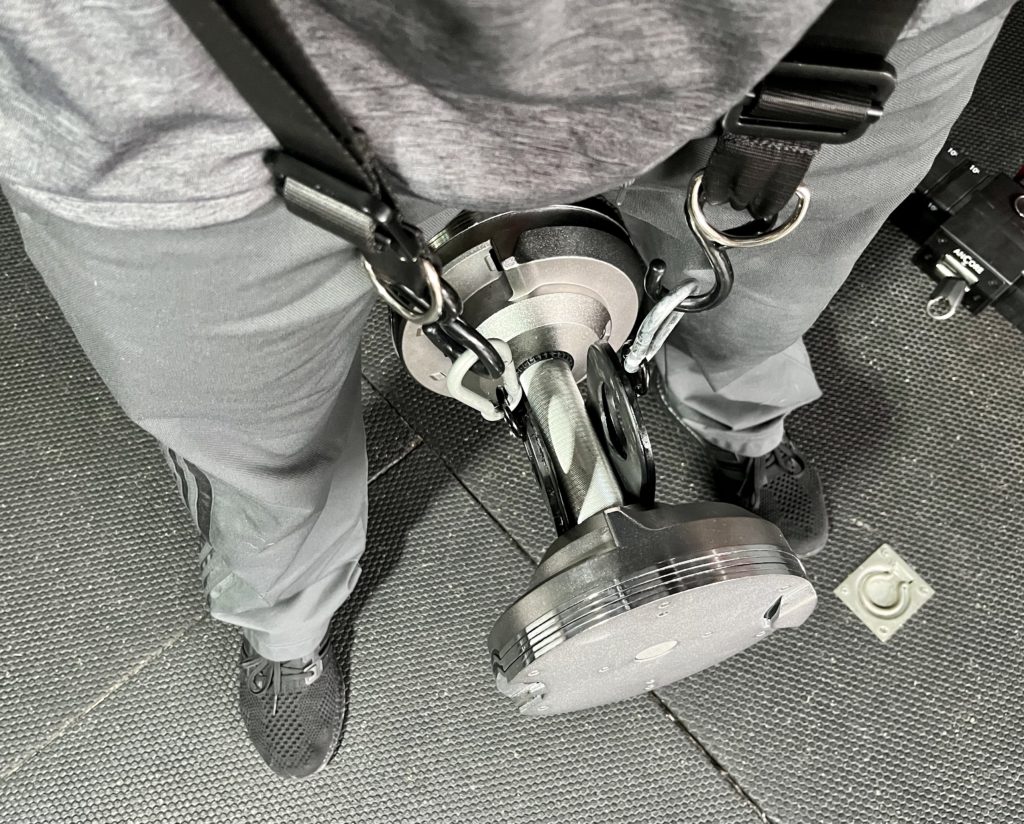
I can also use the squat harness with dumbbells.
Here I’m using a UClip to cradle one of my adjustable dumbbells.
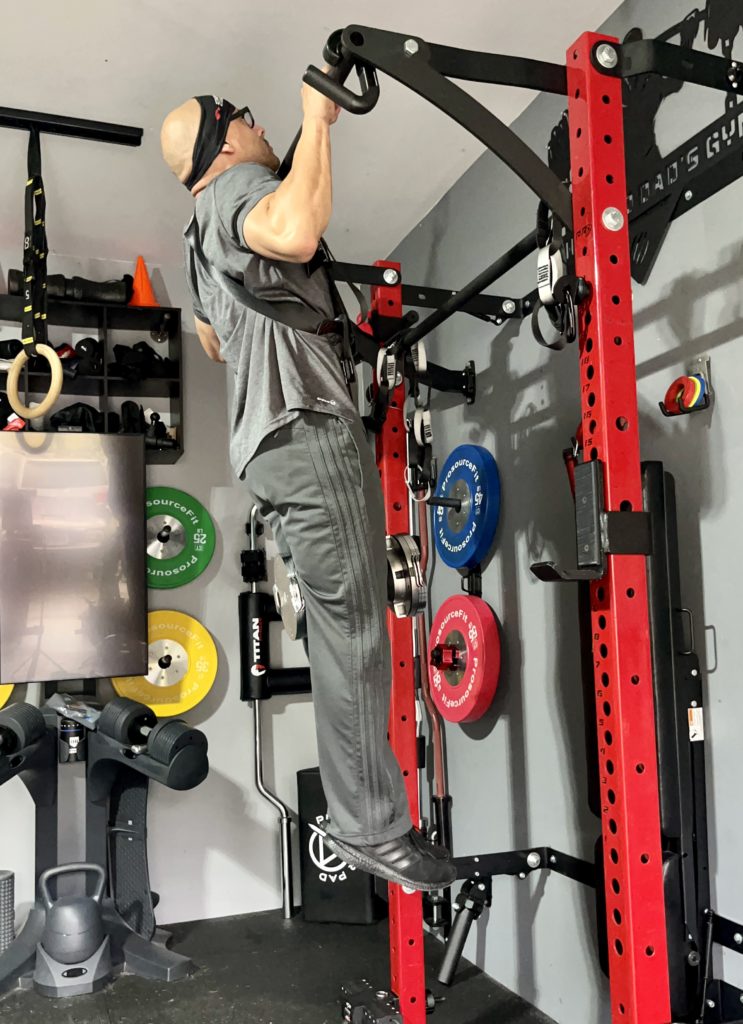
The dumbbell hangs from the harness and I just rest it between my legs while doing pull ups.
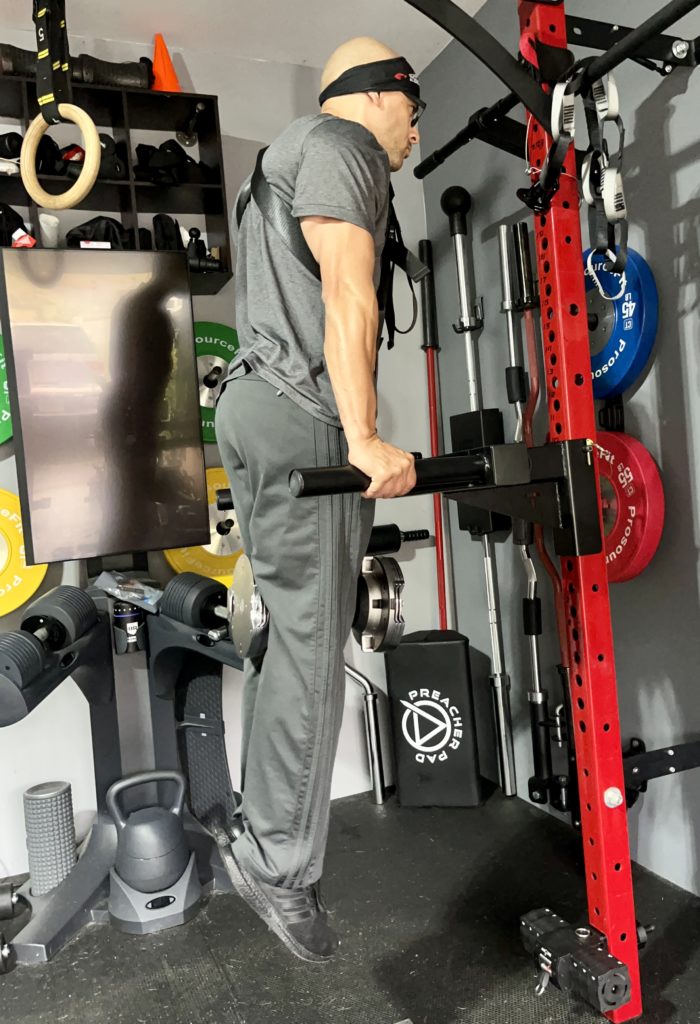
Same set up works when doing dips.
Does It Work As a Front Squat Harness?
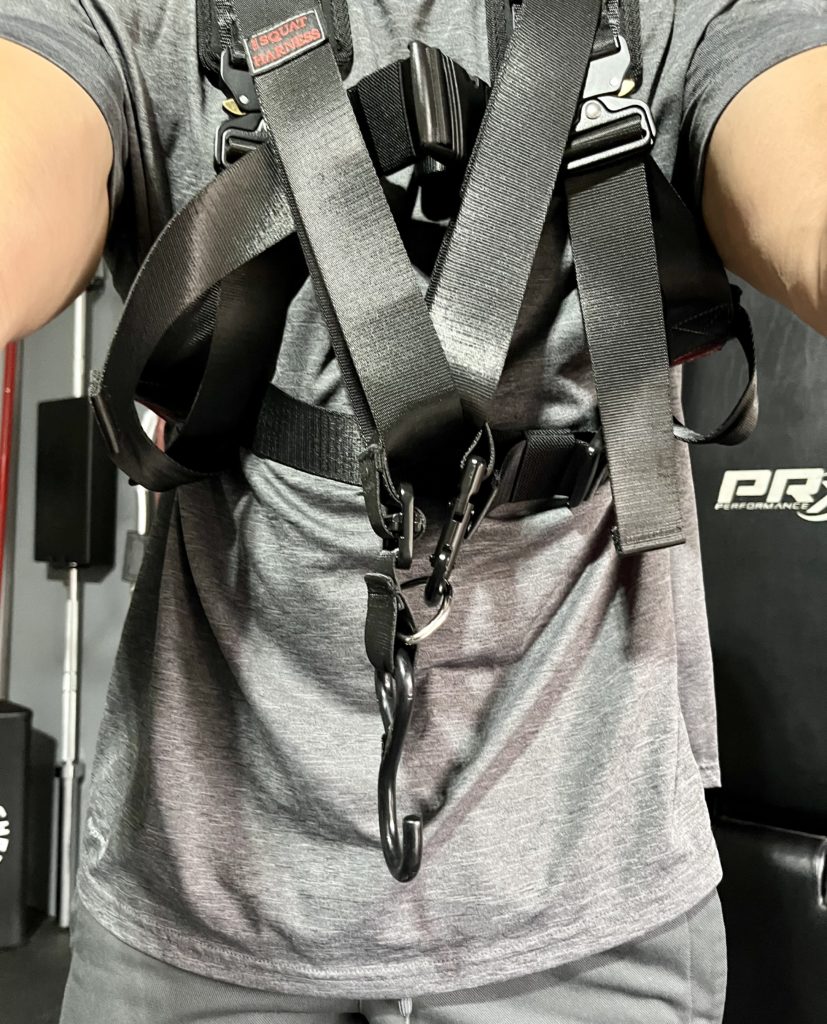
Titan sells a metal front squat harness that’s not adjustable so I don’t think it would fit everyone the same.
And I’ve seen Spud Inc has a harness that buckles in the back which doesn’t seem practical.
So I had to test my squat harness to see if it would feel just like a front squat.
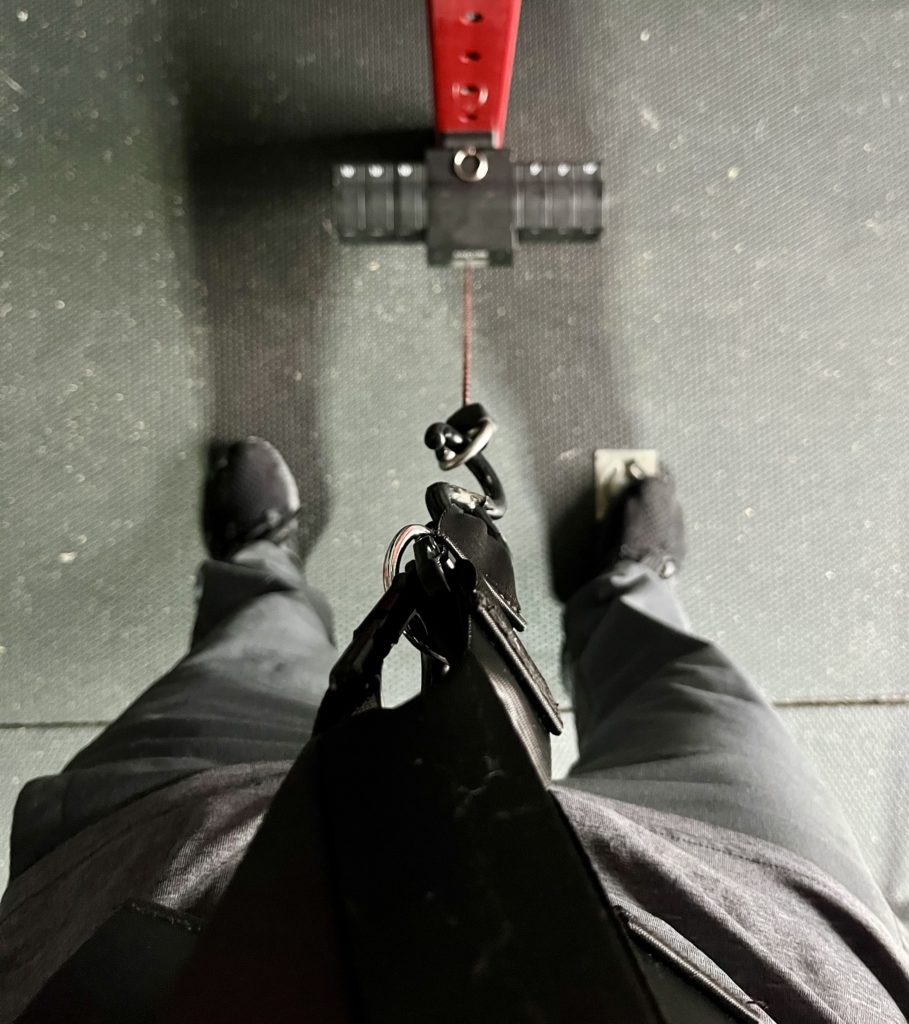
This time I connected the hook to one single cable machine so that the resistance came from in front of me.
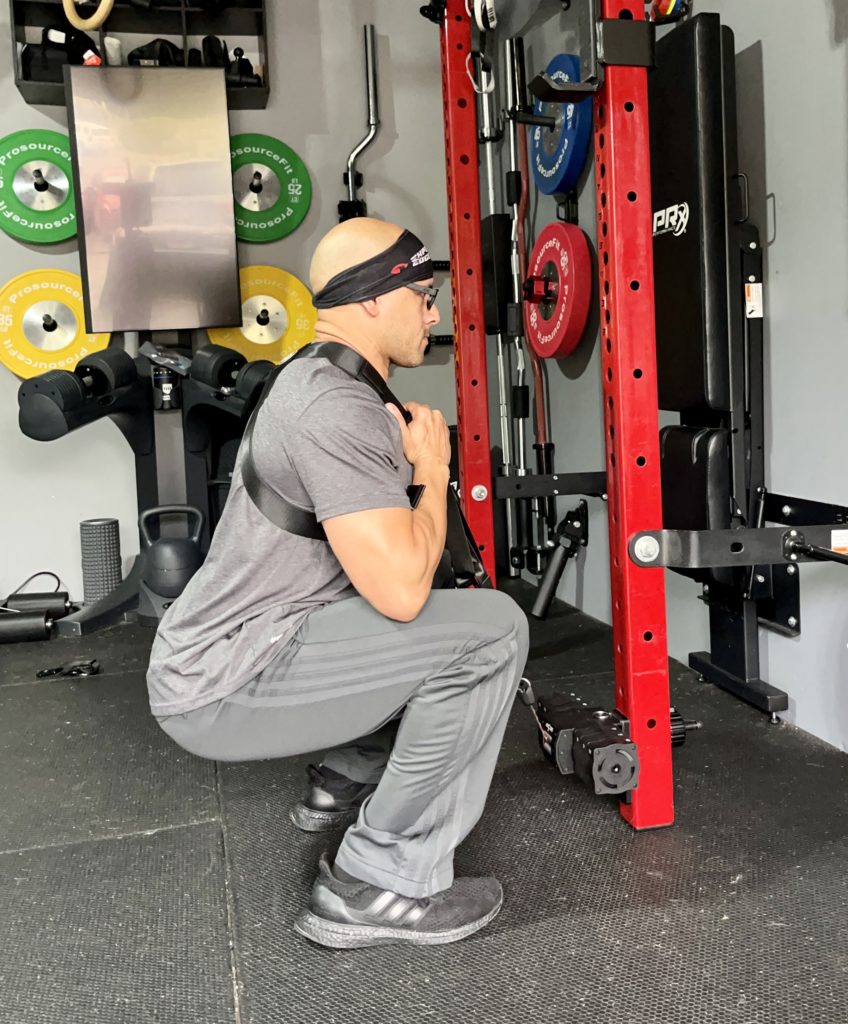
Here I am doing a front squat.
And sure enough, this forces me to keep my spine upright so it feels more like I’m doing front squats with a barbell.
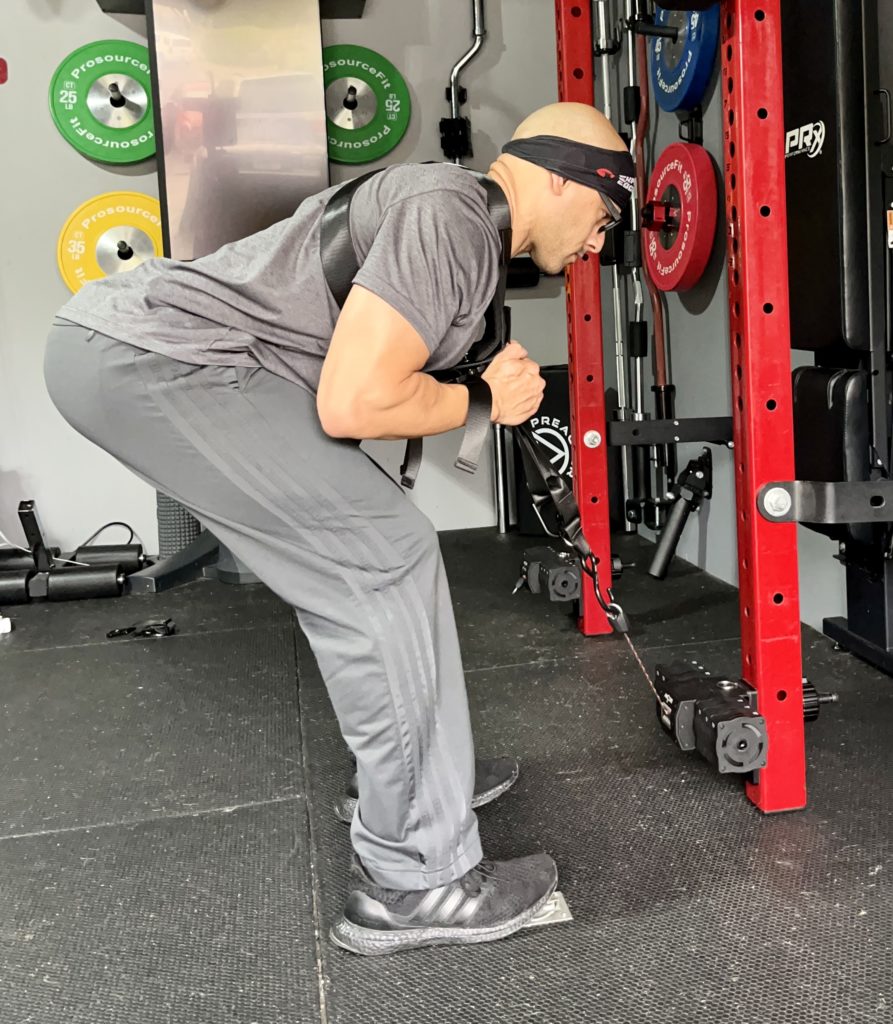
It also feels really good when doing RDL’s and good mornings.
Pros & Cons
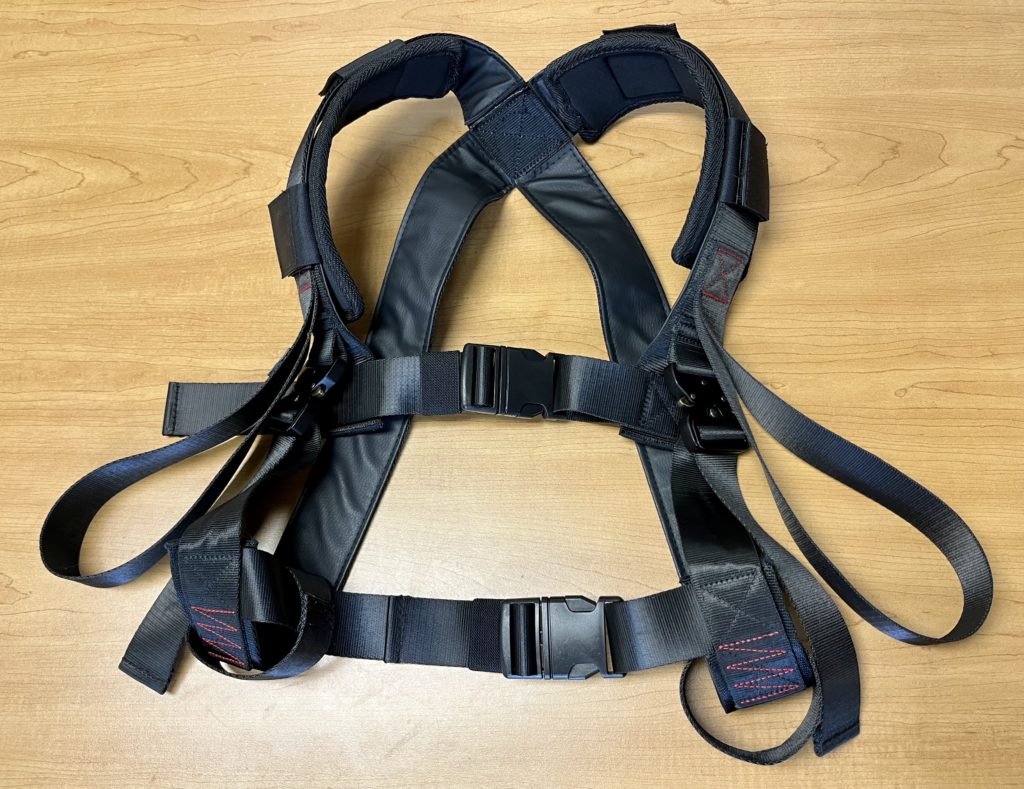
Pros
- Adjustable: The straps are adjustable so it can be used by anyone
- Comfortable: Padding on the squat harness feels good across my shoulders
- Set up: Hooks make it easy to add different kinds of resistance
- Versatile: I can use this with several pieces of equipment that I own like a cable machine, resistance bands, dumbbells
- No spinal loading: Weight is distributed in a way that doesn’t put pressure on my lower back
- Weight capacity: 750 lbs weight capacity will be more than enough for the majority of people
Cons
- Using resistance bands: I personally like using the harness with a cable machine because of the constant tension. Whenever I use resistance bands, I lose tension at the bottom of a squat.
Squat Harness Review
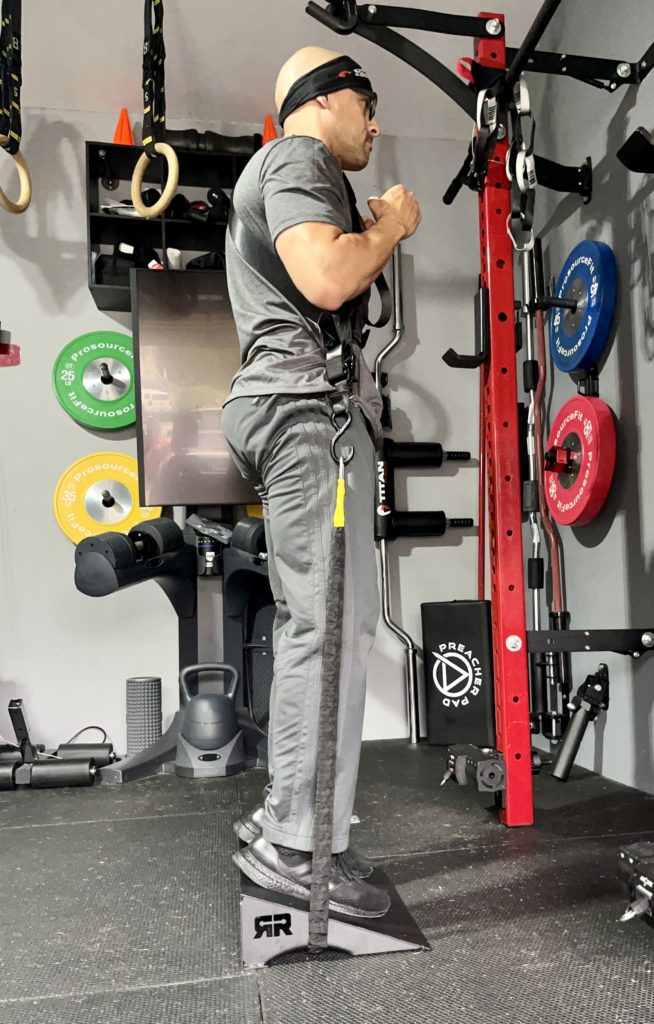
Overall I’m happy with the squat harness because it takes pressure off my lower back but I’m still able to target my legs.
As I’ve shown above, it can be used for many exercises including the upper body.
With a weight capacity of 750 lbs, this is a great barbell squat alternative.
And open ended hooks make it easy to hook up to a cable machine and other types of resistance.
Click Here to Check Out The Squat Harness
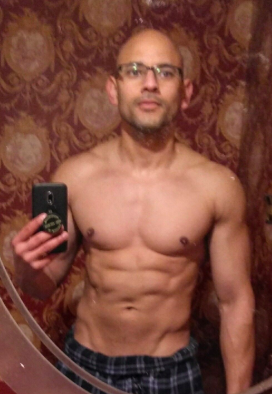
Garage gym athlete, gym hacks, DIY gym projects, and garage gym equipment reviews

